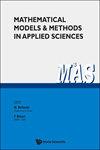联想动态调节作用下农民的应对策略和脆弱性:来自Lubero地区Baswagha部落高地地区农民的经验证据
IF 3
1区 数学
Q1 MATHEMATICS, APPLIED
Mathematical Models & Methods in Applied Sciences
Pub Date : 2023-01-01
DOI:10.12988/ams.2023.917125
引用次数: 0
摘要
在民主共和国,和其他地方一样,农业是一个易受气候变化影响的部门。它在家庭的社会经济平衡中的重要性是不容否认的。大气变化和降雨不稳定使农业面临气候压力及其后果。通过暴露、敏感和适应能力,脆弱性只不过是一种遭受伤害的倾向。农业在脆弱性意义上的暴露有两种。它既有内在的,也有外在的。这指的是概念性的定义,即脆弱性既是农业特有的因素,也是农民本身的特征。除了部门之外,还有每个农民的社会人口和经济特征。本文评估了联想动态对刚果民主共和国卢贝罗地区巴斯瓦哈酋长高地地区农民应对策略和脆弱性水平的调节作用。所提供的数据来自对5组409名户主的调查。结果表明:关联动态改变了农民应对策略与脆弱性的关系方向,暴露率为62.05%;灵敏度为57.54%;有35.45%的应对能力,因此脆弱的比例为38.36%。本文章由计算机程序翻译,如有差异,请以英文原文为准。
Coping strategies and vulnerability of farmers under the moderating effect of associative dynamics: empirical evidence from farmers in the highland zone of the Baswagha chiefdom in the Lubero territory
In the Democratic Republic, as elsewhere, agriculture is a sector exposed to climate change. Its importance in the socio-economic balance of households is not to be denied. Atmospheric changes and rainfall instability keep agriculture exposed to climate stress and its consequences. Captured through exposure, sensitivity, and adaptive capacity, vulnerability is nothing more than a predisposition to experience damage. The exposure of agriculture in the sense of vulnerability is of two kinds. It is both intrinsic and extrinsic. This refers to the conceptual definition that vulnerability is both a factor specific to agriculture and a characteristic of the farmer himself. In addition to the sector, there are the socio-demographic and economic characteristics of each farmer. This article assesses the moderating role of associative dynamics on the coping strategies and level of vulnerability of farmers in the highland area of the Baswagha Chiefdom, in Lubero territory, Democratic Republic of Congo. The data presented are from a survey of 409 heads of households in 5 groups. The results are such that associative dynamics modify the direction of the relationship between coping strategies and vulnerability of farmers, who are exposed at 62.05%; sensitive at 57.54%; have a coping capacity of 35.45%, and are, therefore, vulnerable at 38.36%.
求助全文
通过发布文献求助,成功后即可免费获取论文全文。
去求助
来源期刊
CiteScore
6.30
自引率
17.10%
发文量
61
审稿时长
1 months
期刊介绍:
The purpose of this journal is to provide a medium of exchange for scientists engaged in applied sciences (physics, mathematical physics, natural, and technological sciences) where there exists a non-trivial interplay between mathematics, mathematical modelling of real systems and mathematical and computer methods oriented towards the qualitative and quantitative analysis of real physical systems.
The principal areas of interest of this journal are the following:
1.Mathematical modelling of systems in applied sciences;
2.Mathematical methods for the qualitative and quantitative analysis of models of mathematical physics and technological sciences;
3.Numerical and computer treatment of mathematical models or real systems.
Special attention will be paid to the analysis of nonlinearities and stochastic aspects.
Within the above limitation, scientists in all fields which employ mathematics are encouraged to submit research and review papers to the journal. Both theoretical and applied papers will be considered for publication. High quality, novelty of the content and potential for the applications to modern problems in applied sciences and technology will be the guidelines for the selection of papers to be published in the journal. This journal publishes only articles with original and innovative contents.
Book reviews, announcements and tutorial articles will be featured occasionally.

 求助内容:
求助内容: 应助结果提醒方式:
应助结果提醒方式:


